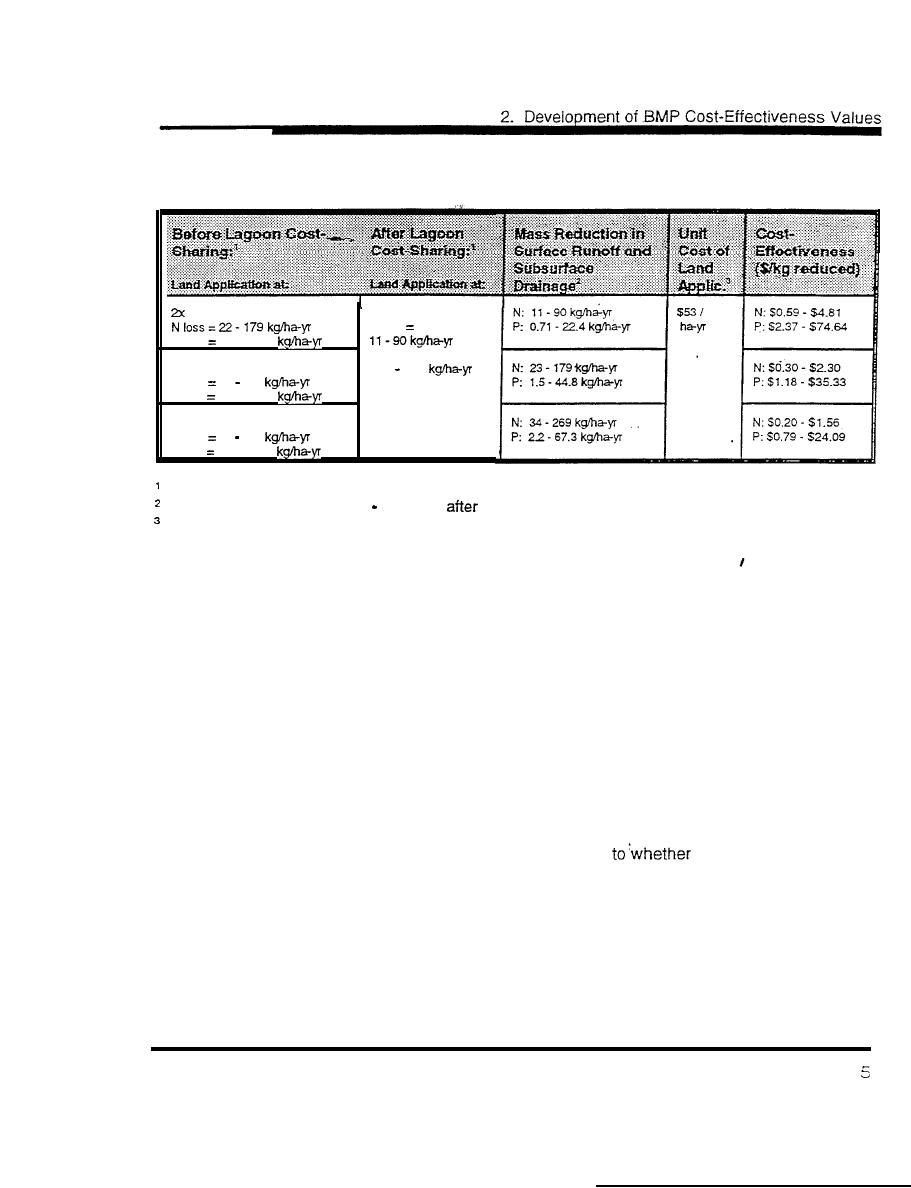
Table 2-5.
Cost-Effectiveness of Agronomic Land Application Relative to Excess Application
Agronomic Rates
Agronomic Rates
N loss
P loss
1.5 to 44.8
P loss =
3x Agronomic Rates
0.71 22.4
N loss 34 269
P loss 2.2 to 67.2
4x Agronomic Rates
N loss 45 359
P loss 2.9 to 89.7
From Table 2-4.
(N losses before cost-sharing) (N losses
cost-sharing).
From Table 2-2.
Effectiveness of Land Application Relative to Direct Discharge
The direct discharge of animal wastes is prohibited by North Carolina State
law; and it is unlikely that direct discharges are occurring to any significant
extent in the Tar-Pamlico basin. However, the potential water quality impact of
any direct discharger may be exceedingly large. Therefore, we have also
calculated cost-effectiveness values for land application relative to a
preexisting condition of "direct discharge".
Table 2-6 presents effectiveness values for this scenario, which are based on a
database of manure and lagoon constituent analysis maintained by the North
Carolina Agricultural Extension Service (1994). As discussed in the previous
section, a 20 percent loss (80 percent effectiveness) is assumed for nitrogen
and a 5 percent loss (95 percent effectiveness) is assumed for phosphorus.
the discharged wastes
The results are also broken down according
were fresh or from a lagoon. Because the nutrient load (per animal) is much
greater for fresh wastes, the effectiveness values for fresh manure are higher.
The calculation details for this table are presented in Appendix 6.
1



 Previous Page
Previous Page
